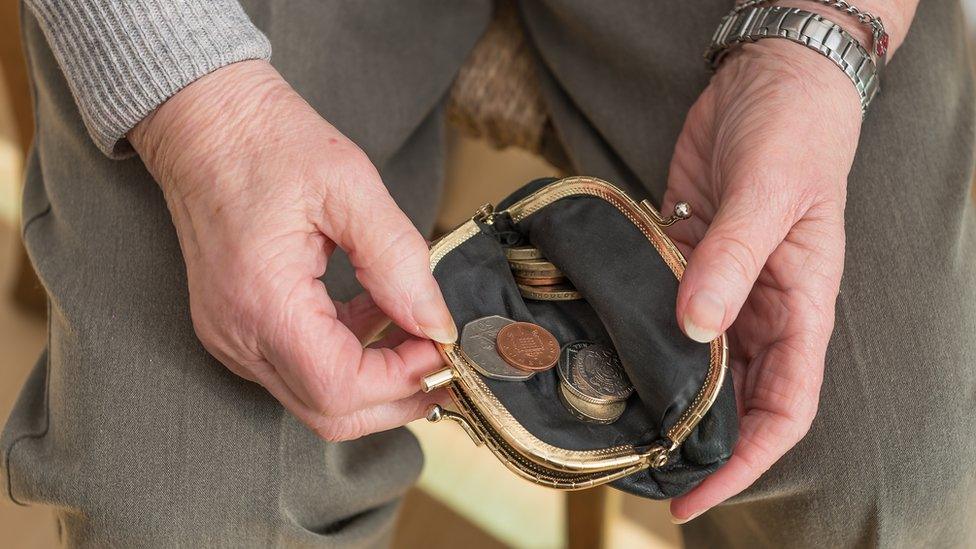Northern Ireland figures show 50k fewer people in poverty
- Published

There has been a significant fall in the number of Northern Ireland people living in poverty, official figures suggest.
The Households Below Average Income report, external looks at income trends over the past four years.
It suggests that, in 2014, 22% of the population - 345,000 people - were living in relative poverty.
By 2018, that had fallen to 16% or 292,000 people.
An individual is considered to be in relative poverty if they are living in a household with an income below 60% of the typical UK income.
The absolute poverty measure also showed an improvement, falling from 20% to 14%.
Food banks: How easy is it to access food poverty help in NI?
An individual is considered to be in absolute poverty if they are living in a household with an income below 60% of the typical UK income as measured in 2010.
The improvement is likely related to the relatively strong performance of the Northern Ireland jobs market.
The unemployment rate is close to a record low and the employment rate is at a record high.
Income equality decline
The Department for Communities, which produces the report, also suggests the lag in the implementation of welfare reforms in Northern Ireland compared with the rest of the UK and the introduction of mitigation schemes could also be relevant factors.
One of the most dramatic medium-term trends shown in the report is the decline in pensioner poverty.
In 2008, 30% of Northern Ireland pensioners were living in relative poverty but by 2018 that had halved to 15%.
The figures also suggest there has been a decline in income inequality in Northern Ireland.
It is measured by the Gini index, where total equality would have a value of zero and one person earning all the income would have a value of 100.
In Northern Ireland, the Gini index has shown signs of consistent reduction since 2013, coming down from 30 to 26.
The report is produced using survey data from about 2,000 households.
- Published5 June 2019

- Published22 May 2019

- Published30 April 2019

- Published28 March 2019
